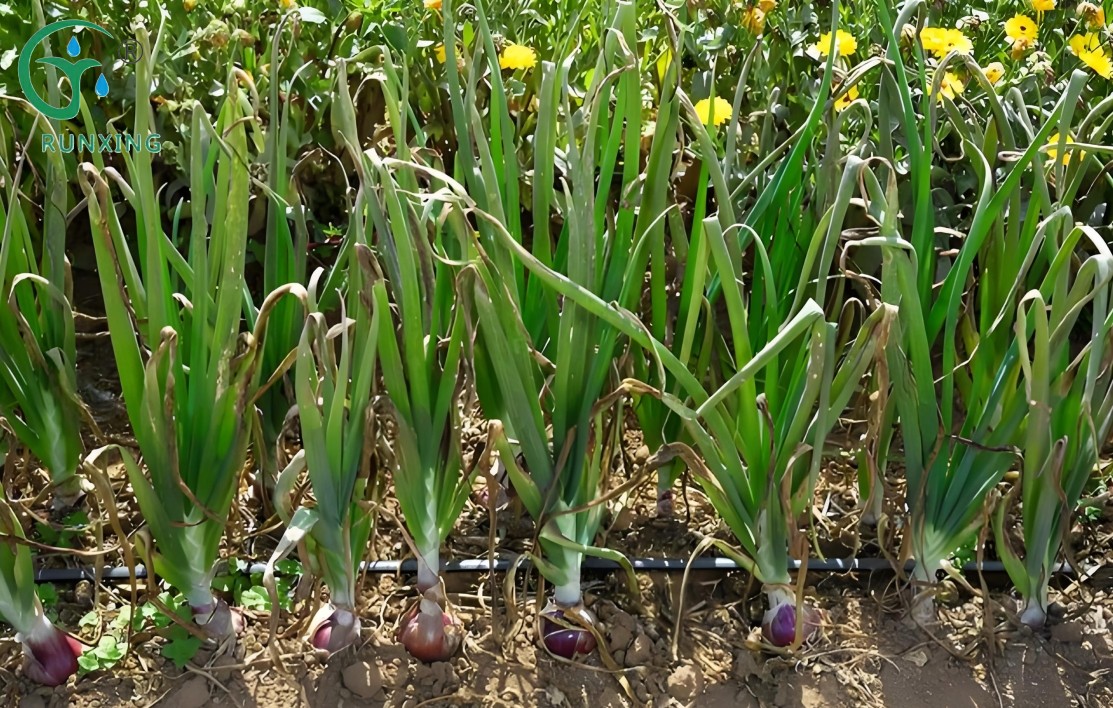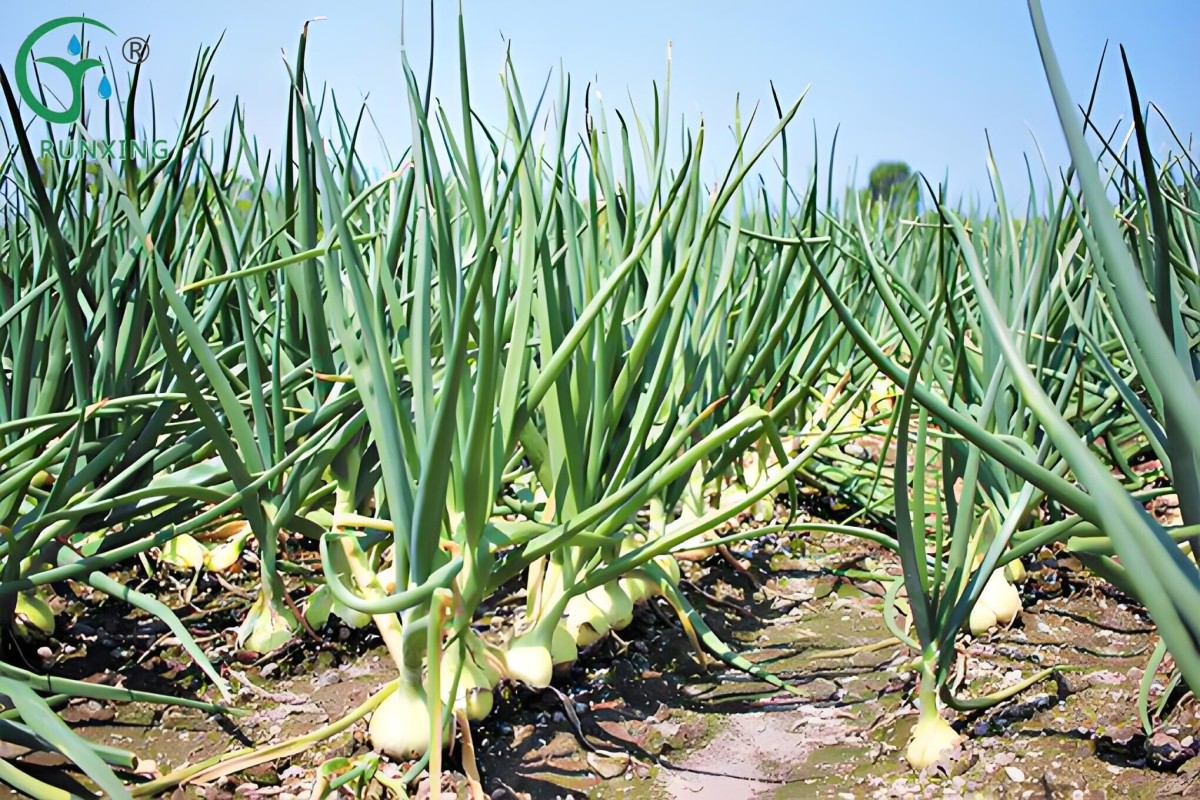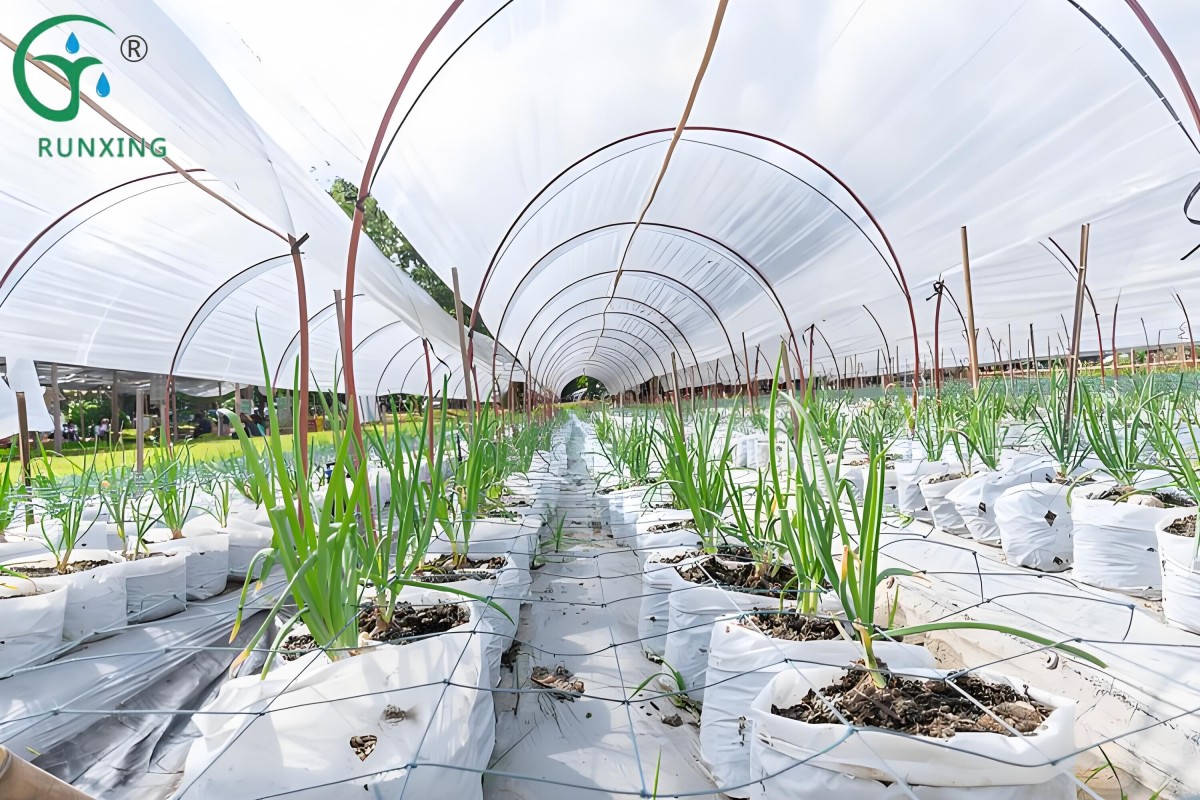Brazilian Onion Farming and the Necessity of Drip Irrigation Systems
In tropical climates like Brazil, onion farming necessitates not only fertile soil and favorable weather conditions but also scientific irrigation techniques to ensure healthy growth and high yields. This article delves into whether drip irrigation systems are necessary for onion farming in Brazil, along with the selection of drip irrigation equipment, installation methods, water usage control, and crucial farming tips.

Do Brazilian Onion Farms Need Drip Irrigation Systems?
The answer is yes. Onions, being relatively drought-intolerant vegetables with their fibrous roots concentrated in the top 20cm of soil, have a limited capacity to absorb nutrients. In tropical regions like Brazil, drip irrigation systems can precisely control the amount and timing of irrigation, preventing excessive or insufficient water from adversely affecting onion growth. Drip irrigation not only enhances water use efficiency but also reduces the incidence of pests and diseases, making it an ideal irrigation method for onion farming.
What Drip Irrigation Equipment is Needed?
Drip irrigation systems primarily consist of water pumps, connectors, filters, fertilizer injectors, water delivery pipes, and drip tapes. For onion farming in Brazil, submersible pumps are recommended as the water source power, with specifications chosen based on the irrigation area. Filters should be of the disc type, ensuring that the water source is free of suspended particles larger than 0.8mm in diameter. Fertilizer injectors can be proportional feed pumps, facilitating the addition of fertilizers during irrigation. Water delivery pipes generally use 63mm diameter rigid pipes, while drip tapes or drip lines with standard specifications, such as 16mm diameter rigid pipes or flexible tapes with 3mm outlet holes every 30cm, are used.
How to Lay Out and Install Drip Irrigation Equipment?
Installing drip irrigation equipment involves connecting the water pump to the outlet pipe, filter, and fertilizer injector using four-way connectors. The pump outlet is then connected to the water delivery pipeline via a 63mm diameter rigid pipe entering the farming plot. Drip tapes or drip lines are laid on the planting ridges, with two drip tapes (or lines) per ridge, ensuring they are straight and the film is flattened and securely pressed around to prevent wind from lifting it.

How Much Water is Needed and How to Control It?
Water usage during the onion growth cycle should be scientifically controlled based on growth stages and weather conditions. In Brazil, onions should receive a thorough drip irrigation immediately after planting, with a water volume of approximately 20-25 cubic meters per mu (approx. 0.067 hectares) to promote seedling survival. During the seedling and leafy growth stages, depending on seedling condition and soil moisture, 3-4 irrigations are applied, each with a water volume of 12-15 cubic meters per mu. The bulb enlargement stage requires 5-6 irrigations, each with 14-16 cubic meters per mu of water. The bulb maturation stage needs one irrigation with about 20 cubic meters per mu of water. Irrigation should cease 10-15 days before harvest.
Controlling water usage hinges on flexibly adjusting the irrigation schedule based on onion growth stages and weather conditions. During the bulb enlargement stage, as temperatures rise and plant biomass increases, water consumption also rises, necessitating increased irrigation to meet plant growth needs. As the bulb nears maturity, irrigation should gradually decrease to avoid cracking the outer skin and compromising quality.
How to Better Farm Onions? Farming Tips
Soil Selection and Fertilization: Onions thrive in fertile, deep, and well-drained sandy loam soil. Before planting, level the soil and apply composted manure and calcium superphosphate as base fertilizers.
Seeding and Seedling Management: Prior to sowing, seeds should be soaked and placed in a 25-28°C environment for moisture-retaining germination. After sowing, cover with fine soil and mulching film to maintain soil moisture and temperature, aiding seed germination.
Transplanting Management: Onions are generally transplanted before winter, with attention to planting depth, ideally around 1cm. Reasonable planting density is crucial for increasing onion yields, typically with row spacing of 15-18cm and plant spacing of 10-13cm.
Soil Cultivation and Hilling: During onion growth, appropriate soil cultivation and hilling enhance soil permeability, improve nutrient utilization, and promote bulb enlargement.
Pest and Disease Control: Onion main diseases include downy mildew and gray mold, which can be controlled by spraying pesticides. Pests like thrips can be managed with cypermethrin or metoclopramide sprays.
Timely Removal of Inflorescences: To boost onion yields, remove flower buds before they form flower heads, avoiding excessive nutrient consumption.
Reasonable Water Control: Onions require moderate watering throughout their growth. Water should meet growth needs while avoiding excessive growth. Especially during bulb enlargement, increase watering but reduce it near harvest.

In summary, adopting drip irrigation systems for onion farming in Brazil can significantly enhance yields and quality. By scientifically selecting drip irrigation equipment, properly laying out and installing it, precisely controlling water usage, and mastering crucial farming tips, efficient onion farming and sustainable development can be achieved.
If you have any needs, please contact us.
About Us
We are dedicated to offering innovative, water-saving, and labor-saving irrigation solutions for agriculture worldwide. Our focus on quality and continuous innovation drives the development and progress of the industr
LOGO
This stunning beach house property is a true oasis, nestled in a serene coastal community with direct access to the beach.
Opening Hours
Monday - Friday : 9AM to 5PM
Sunday: Closed
Closed during holidays
Contact
+18888888888
hezuo@eyingbao.com123 West Street, Melbourne Victoria 3000 Australia
